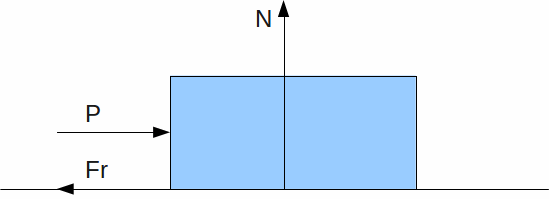When a block resting on a surface is pushed (or pulled) with a force P, it experiences a force of friction, Fr, that opposes the movement of the block.

If the force pushing the block increases, so does the frictional force, but only up to a limit. The maximum frictional force is proportional to the normal reaction force, labelled N in the diagram above. The constant of proportionality is called the coefficient of static friction and labelled![]() The s indicates that it is for static friction. We can write
The s indicates that it is for static friction. We can write
![]()
If the maximum frictional force is reached, the block is said to be in a state of limiting equilibrium.
It should be noted that
-
The coefficient of friction defined above is for static friction, such that the block does not move. If the block is in motion, then we use the coefficient of dynamic friction
 and write
and write Dynamic friction is always less than static friction, so
Dynamic friction is always less than static friction, so
-
The coefficient of friction – whichever definition is used – is a ratio of forces and is dimensionless. It has no units.
-
The coefficient of friction between smooth surfaces is zero.
-
The coefficient of friction is less than one unless the surfaces are stuck together.
-
The frictional force acts along the interface between the two bodies in contact.
-
The frictional force always opposes motion. If the tendency to move changes direction, so does the frictional force, still opposing motion.